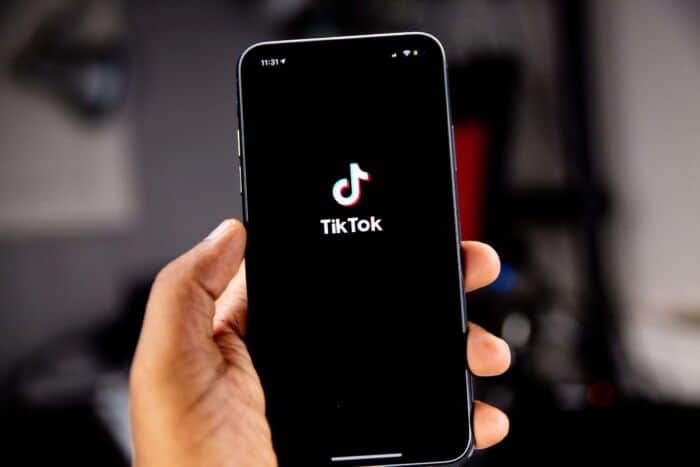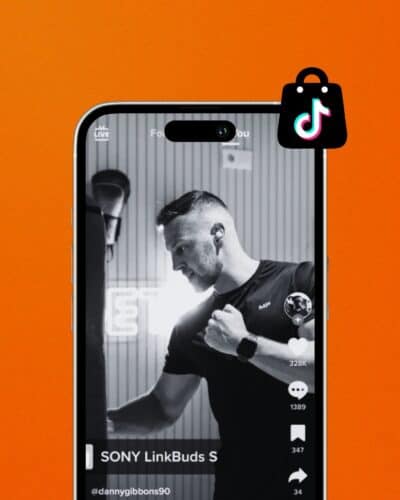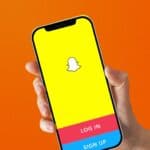In this digitalized world where 65% of global internet traffic comes from video traffic, it’s fitting that we take a glance at the video marketing space.
From its early beginnings on YouTube, looking ahead to the possibilities of the metaverse, how exactly has video marketing evolved, and more importantly, what can we learn from the latest developments?

Contents
The Rise of Video in the Digital Age
Why Should Brands Keep up With Video Marketing in 2024?
What is Video Marketing?
Video marketing is everywhere you look. For those unaware, video marketing is the practice of using videos to promote and market a product or service, increase engagement, educate consumers and customers, and reach digital audiences with new mediums.
Video marketing is used widely by brands and agencies from various sectors and niches. For example, we might collaborate with a brand that’s looking to build a brand awareness campaign in the beauty sector; for this we’d suggest implementing explainer videos through influencer channels to help an audience understand why they need a particular product.
The Rise of Video in the Digital Age
The launch of YouTube birthed video marketing as we know it today. Google purchased the video sharing platform in 2006, and as of 2009 there were seven different ad formats available.
Video is perhaps the most dominant form of communication today. There are numerous attributes that have contributed to its rise over time.
Perhaps the most important factor in that rise was the emergence of smartphone technology, which made consuming video content available on-hand, anywhere.
YouTube paved the way for video marketing to integrate with other social media platforms. Platforms like Instagram, that previously specialized in image-only content, now divvy up most of their investment towards video content and formats to support it. Twitch has seen large success thanks to video, and even pioneered a new format for video marketing in live streaming.
The sudden takeover of TikTok ushered in an industry wide rollout of short-form, vertical swipe video content. YouTube Shorts, Instagram Reels, Facebook Reels and Snapchat Spotlight are all reiterations of TikTok’s irresistible formula.
How video marketing has evolved over the last 5 years
2005 marked the starting point for video marketing. Nike’s commercial featuring Ronaldinho helped unravel the era of digital video when it became the first clip to surpass 1,000,000 views on YouTube.
A year on, Google acquired YouTube and launched video advertising on the platform as a way to capitalize on the emerging format, and to monetize videos. This enabled the everyday user to get involved too, whether that be marketer, individual or brand.
Fast forward to today, and video marketing has now taken over the internet landscape. Consumers continue to spend record amounts of time consuming online video content.
The state of video marketing in 2024 is one that combines the old with the new. While brands and marketers still rely on tried and tested formats like vlogs and tutorials, we also see more progressive and innovative strategies involving augmented and virtual reality experiences.
User-generated content is another facet of video content that has seen success in recent years. This usually consists of video submissions from consumers that a brand will then post to their own channel. A perfect example of this is Doritos’ Triangle Tryouts hashtag challenge ahead of Super Bowl LVII, which encouraged users to submit videos under a branded hashtag with the incentive of appearing in the brand’s ad placement.
With 4.9 billion smartphone users worldwide and an average of four hours and 39 minutes spent on phones each day in the US, it goes without saying that video marketing has had to adapt to this shift. As such, the rise of vertical swipe video has become commonplace, which focuses on keeping the user engaged for a longer period of time.
Live streaming is another of video marketing’s newer formats. Brands can tap into the market through creators on Twitch by sponsoring their live streams, to which thousands of fans will tune in to watch them play video games, react to other videos or just simply chat with the audience.

2024 video marketing statistics
Video is being widely used for brand discovery. 66% of consumers have actively searched for video content to find out more about a brand
Live commerce is emerging as a strong trend, following its broader success in China. TikTok is the place to be as the app has generated more than $8.4 billion revenue as of February 2024.
161.4 million people watched live video content in 2023—this is projected to increase in 2024.
50% of TikTok users have bought something after watching a TikTok Live
89% of consumers want more videos from brands in 2024.
90% of video marketers say video has helped them increase brand awareness.
Webinars are changing the B2B world with 95% of B2B companies using Webinars as a key marketing tool.
Short-form video content continues to be the domineering formula. Videos that are between 15-30 seconds have a 70% click-through-rate making them the most popular form of video content available in social media feeds.
2024 Video Marketing Trends
By the end of 2023, online videos recorded an audience reach of around 92% among internet users worldwide. Things aren’t slowing down either. This year, expect video marketing to evolve further, adopting new technologies that will drive trends across social media throughout 2024.
Interactive and Shoppable Video Content
Interactive video content, including shoppable videos, is gaining traction, offering viewers the chance to interact directly with content through clickable links. These innovations are transforming passive viewing into an interactive, engaging experience that can drive direct sales and increase engagement rates.
Extended Reality (XR) Experiences
The integration of Augmented Reality (AR), Virtual Reality (VR), and Mixed Reality (MR) into video marketing strategies is deepening, providing users with immersive experiences that were once the domain of science fiction. Brands are leveraging XR to create engaging marketing campaigns that allow consumers to experience products or services in a completely new way.
Sustainability and Social Responsibility Messaging
As global awareness of environmental and social issues rises, consumers are increasingly drawn to brands that align with their values. Videos that highlight sustainability efforts, social responsibility, and ethical practices are resonating more with audiences, making them a key trend for brands looking to connect on a deeper level with their customer base.
AI-Driven Personalization
The use of AI and machine learning algorithms to personalize video content is becoming more sophisticated. Brands are now able to offer personalized video experiences at scale, tailoring content to individual preferences, browsing history, and consumer behaviour, significantly enhancing the customer journey and increasing engagement rates.
Live Commerce
Live commerce, live shopping, live shoppable content, or TikTok shop. Whatever you want to call it, this new form of social media shopping experience is booming and you won’t be able to ignore it for much longer. Content distributors, online sellers and big brands alike are rushing to capitalize on rapidly changing consumer behavior, and tracking some jaw-dropping results. For more information on live commerce, check out our live commerce education deck.
What brands can learn from recent video marketing trends
Brands must start to take notes of recent trends and developments within the video marketing space. Implementing a social first video marketing strategy plays into the hands of those looking to drive maximum engagement, whilst undercutting astronomical prices usually linked to TV advertising for the same number of interactions. The rise of branded hashtag challenges has enabled brands to leverage user-generated content and harness the power of participation.
The rise of social commerce has only just started in Western markets, its imminent surge will be propelled by a convergence of consumer preferences and technological advancements.
Expect to see even more shifts in shopping behaviors that emphasize convenience and trust in peer-driven recommendations. Platforms like Facebook, Instagram, TikTok, and Pinterest are continually expanding their shopping features, making in-app purchases more seamless, catering to a mobile-savvy audience.

Predictions for the future of video marketing
So at the start of 2024, what can we expect from video throughout the year, and looking forward to the future of video marketing.
AI and Machine Learning Evolution
AI’s role in video creation and distribution will expand, making it easier for brands to create high-quality, personalized content. Generative AI could offer new formats and storytelling methods, while AI-driven analytics will become even more critical in understanding viewer engagement and optimizing strategies.
Decentralized Video Platforms
The growth of blockchain and decentralized technologies may give rise to new video platforms that offer greater control over content and revenue to creators and marketers. This could democratize video marketing, enabling more direct engagement with audiences and innovative monetization strategies.
Increased Focus on Privacy and Data Security
With growing concerns over data privacy and security, video marketing will need to adapt to stricter regulations and consumer expectations. This could lead to new approaches in targeting and personalization that respect user privacy while still delivering effective marketing messages.
How your brand can stay ahead of the trends (and the competition)
Staying ahead of the curve in the era of 24-hour rolling content can be difficult even for the most seasoned brand marketer. From one marketer to another, here are some great ways to beat out the competition.
Webinars
Attending webinars can be a great way to identify new and upcoming trends. Outlets like GWI and HubSpot offer regular sessions looking at the most recent data to identify trends.
Newsletters
Brands and agencies from a wide variety of sectors publish weekly newsletters containing the latest trends, stories and internal data worth keeping an eye on. Some newsletters compile emerging trends before they enter virality, which sounds a lot like ours, which you can subscribe to.
Filter your searches
Platforms like TikTok and YouTube enable you to filter your searches. Filtering by date is perhaps the most useful tool, which can help keep an eye on the most recent posts gaining the most traction.
Why is it important that brands stay up to date with video marketing?
There were predicted to be 48 billion digital viewers in the world by the end of 2023.
The size of the market is incomprehensible, and with most online communications being by video, it becomes impossible to ignore.
Avoiding the latest video marketing trends is costly. There are so many moving shapes in the industry, content consumption habits altering and new advancements in tech that aid new creative methods. Choosing to avoid these could leave your brand falling way behind any of your competitors.
Our favorite video marketing example
DELL
In early 2020 we were appointed the influencer agency of record for Dell. As part of an all-agency team, we worked alongside the media and creative outlets to deliver high-quality video content against ambitious goals. Our activity for Dell ranged from long-term ambassadors all the way through to specific short term activation, delivering video content across Instagram, Facebook, YouTube, TikTok, Snapchat, LinkedIn, Twitch.
This led to some impressive results including:
- Driving 45x more followers on Dell’s Instagram page using a social growth strategy
- 23.6 million engagements across campaigns
- 168 million impressions across campaigns
Concluding thoughts
Video marketing is the most common form of communication in the digital era, and shows no signs of slowing down. Marketers must keep an eye on new developments to avoid being left behind. Expect augmented and virtual reality to become more of a focus throughout the year, as social platforms look to develop tools to support immersive experiences.
Goat is a full-service agency, for further information on video marketing check out our services page, or some of the work we’ve produced for clients across the globe.
Why not follow the Goat Agency on LinkedIn, Instagram, TikTok and Twitter for real-time announcements of all our new blog content?
Video marketing FAQs:
Can The Goat Agency help with social video production and strategy?
Our in-house video team and design department work in collaboration with our creative strategy team to produce campaign assets for many of our retained clients.
This involves the production of original branded video content, photography, motion graphics, sound design and AR filters, as well as the repurposing of influencer content, into fully optimized brand assets.
Alongside content production, we deliver influencer marketing campaigns, where the influencers are doing the job for you!
Why is video marketing so powerful?
The power of video is enough to convince visitors of the value of your products or services. Videos help potential customers feel more confident in making a purchase decision.
Videos don’t require a lot of effort from the consumer, especially if they’re short. This means consumers can access information faster and easier than other forms of content.
Why is video marketing important?
Video can deliver information and help connect your brand with your target audience at the same time. Video marketing is important because it engages your audience and triggers emotion, which is necessary to build a relationship between brand and consumer.
How do you measure the success of video marketing?
Brands may measure different metrics to calculate video marketing success. This could include video views, social media shares, engagements, impressions, conversions, click-through rates and video completions to name a few.





